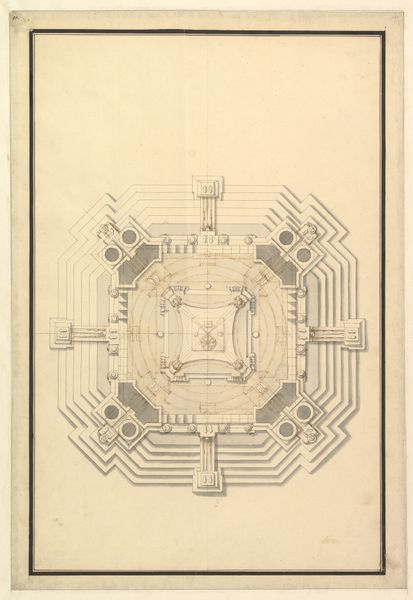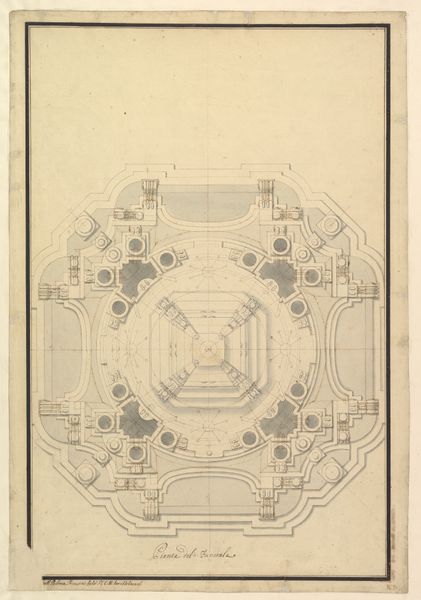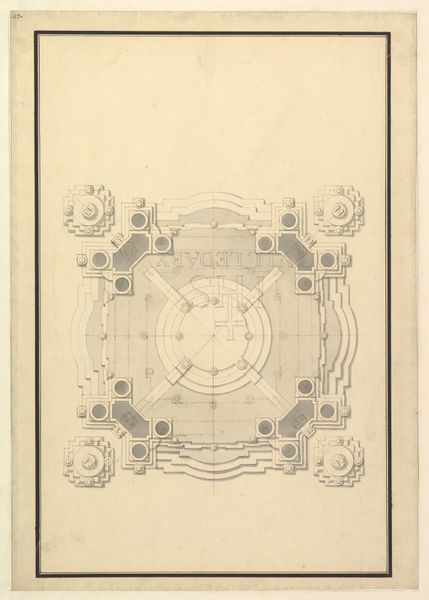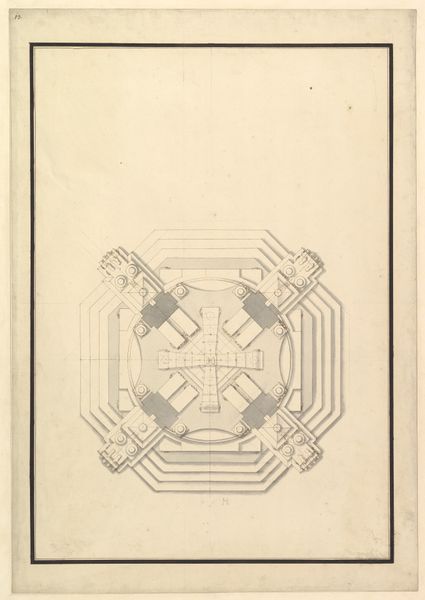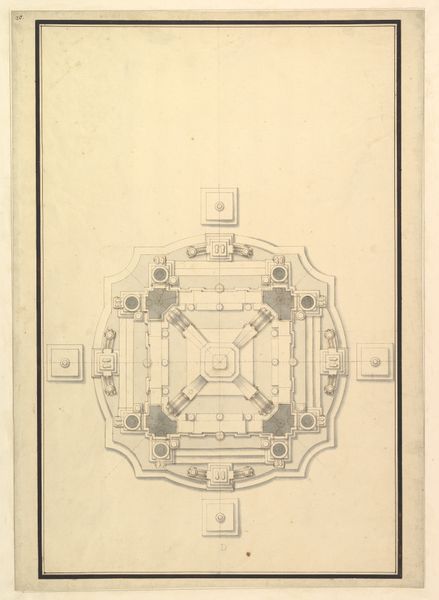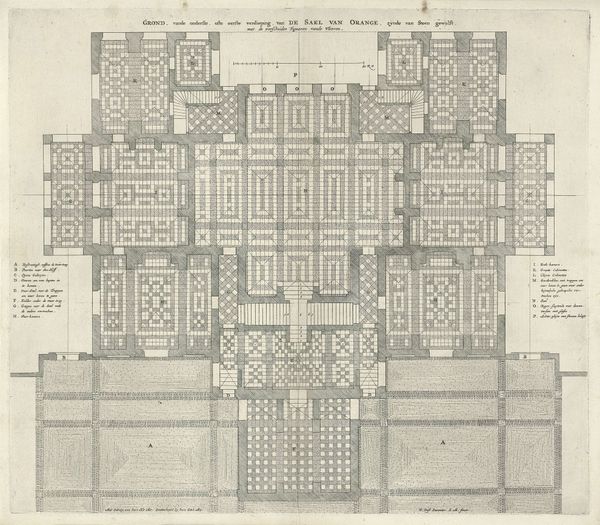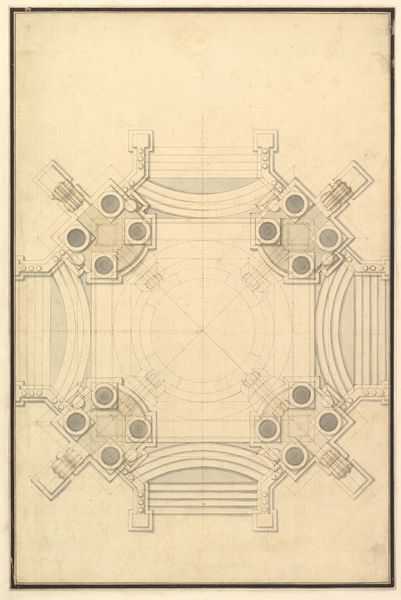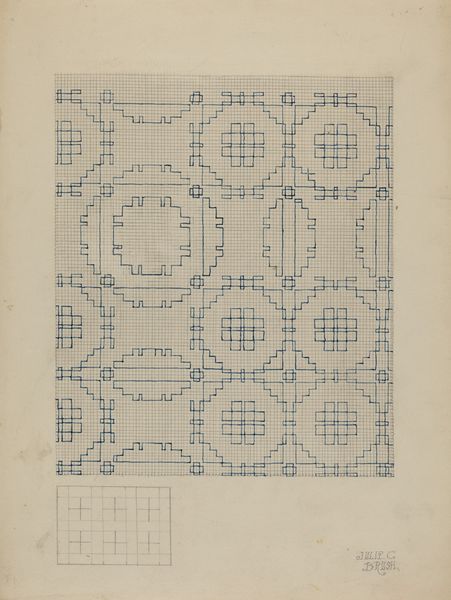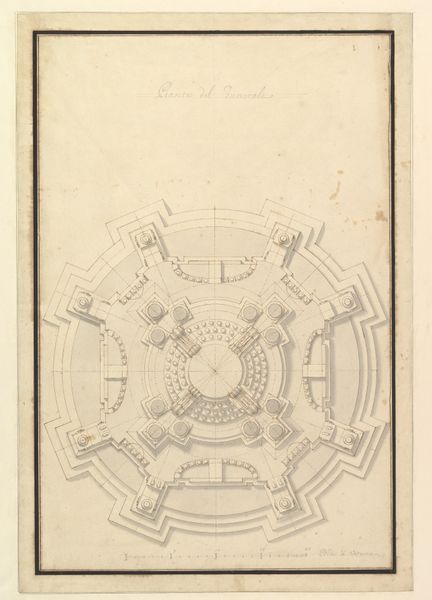
Ground Plan for a Catafalque for Leopold, Duke of Lorraine (d. 1729) 1724 - 1734
0:00
0:00
drawing, print, etching, architecture
#
drawing
#
baroque
# print
#
etching
#
etching
#
geometric
#
history-painting
#
architecture
Dimensions: 20-1/8 x 13-7/8 in. (51.1 x 35.2 cm)
Copyright: Public Domain
Curator: The somber formality in this etched drawing really strikes me. It’s all lines and shadows, so starkly laid out. Editor: I agree. It is remarkably precise and, in its own way, beautiful. This is Giuseppe Galli Bibiena’s "Ground Plan for a Catafalque for Leopold, Duke of Lorraine," created sometime between 1724 and 1734. A catafalque, of course, being a raised platform for a coffin during a funeral. Curator: The Baroque period loved these displays of power and grief. The Duke's passing was clearly meant to be marked by a grand, symbolic statement. What sort of cultural context was shaping such elaborate mourning rituals? Editor: Lorraine, though ostensibly independent, was a pawn in the power struggles between France and the Holy Roman Empire. Leopold sought to assert his dynasty's legitimacy and standing amidst constant political precarity. The imagery involved would reinforce his legacy. The symbols and architectural forms echo through many eras. Curator: I see what you mean. All of this symmetry is intriguing, almost overwhelming. What visual motifs are repeated that hold the most significance for you? Editor: For me, it's the squares inside of the circles, and the almost altar-like shapes suggesting reverence, duty, legacy and ascension. It points to this persistent human need to order even death, and to find meaning even in mortality. But it all has strong authoritarian undertones. Curator: I am drawn to that, too. To me, the precision, even the austerity, speaks volumes. We have a potent visual metaphor for hierarchy, for social control even in bereavement. Consider who got to participate in or witness these rituals, and who was excluded. This plan isn't merely a design; it’s a map of social relations and political power at a very specific point in time. Editor: In examining plans like this, we confront how even expressions of grief and remembrance become staged performances, infused with societal structures and political intentions. Thank you, it's easy to see more clearly after our talk. Curator: Likewise. Understanding that the design has its roots in complex historical and social frameworks enables us to examine our current cultures around death and dying. It really highlights how ritual performs in times of collective or personal grieving.
Comments
No comments
Be the first to comment and join the conversation on the ultimate creative platform.
